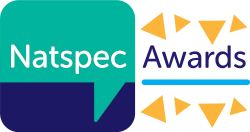Preparing and submitting your entry
We recommend that you:
- plan to submit your entry/ies in good time so there is time to sort out any glitches or technical difficulties
- familiarise yourself with the relevant criteria before you start to prepare your submission
- use our innovation checklist to assess your proposed submission
- identify what, if any, additional material would strengthen your application, ensuring that you direct the judges to particular pages or paragraphs in longer documents submitted – but avoid uploading extra material if it simply repeats information in the online form
- consider preparing your submission as a Word document before cutting and pasting the text into the online form
- follow the guidance referring to length / word restrictions and recommended file transfer methods when submitting any additional evidence
- have robust version checking in place as your entry is being prepared
- confirm with your team that the correct final version of the entry is being submitted
- ensure one person from your organisation has overview of all entries being submitted to avoid unintentionally sending in two entries for the same award as this is not permitted.
Lessons learnt – what makes a strong entry?
Natspec receives over 50 entries for the awards each year, with the number of entries spread relatively evenly over the award categories. The standard of entries is generally high, but some always stand out above the others and it’s these that make it onto the shortlist.
The strongest entries:
- clearly relate to the criteria for the category of award
- describe practice that is innovative rather than generally effective provision
- explain what issues have been addressed and how the new practices are having positive results
- focus in depth on a particular aspect of practice, rather than providing a less detailed picture of a range of inter-connected developments
- generally focus on an initiative relating to a broad group or whole cohort of learners, rather than to very small groups, or to an individual
- provide strong evidence of impact (qualitative and / or quantitative), from different sources, including feedback from students on how they are benefiting from the initiative. Strong entries usually include additional uploads that clearly detail what has been achieved and what effect that has had.
Weaker entries:
- include insufficient information about the project, and a lack of evidence of impact; additional evidence uploaded does not always offer new information
- do not show how learners have been directly involved in the project or initiative
- focus on projects which have not had time to bed in and hence have not yet yielded convincing impact evidence
- are not focused on innovative practice or do not clearly set out what makes the approach innovative
- demonstrate innovative practice but are not closely enough linked to the focus area for the award, or do not pay sufficient attention to the criteria that the judges use to make their decisions
- cover too wide a range of work to enable sufficient detail to be included within the given word count.
